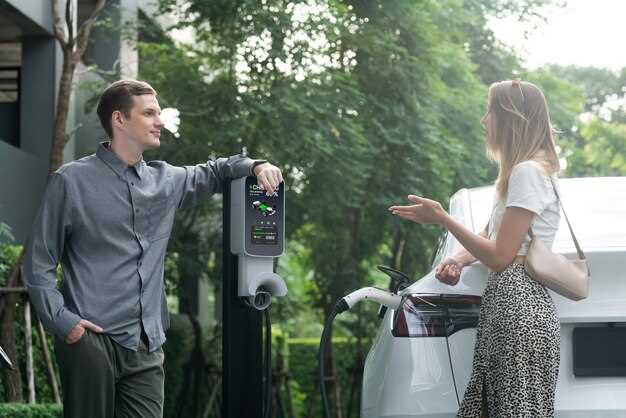
In recent years, the automotive industry has witnessed a significant shift towards more sustainable modes of transportation. Electric vehicles (EVs) and hybrids are often compared as alternatives to traditional gasoline-powered cars, but the environmental implications of each are strikingly different. Understanding these disparities is crucial for consumers making eco-conscious decisions.
While both EVs and hybrids aim to reduce emissions and fuel consumption, electric vehicles offer a more substantial reduction in greenhouse gas emissions. EVs operate solely on electric power, eliminating tailpipe emissions entirely. In contrast, hybrids still rely on a gasoline engine even if they incorporate an electric motor. This fundamental difference leads to a lower overall environmental impact for EVs compared to hybrids, especially as energy sources continue to shift towards renewable options.
Furthermore, the lifecycle assessment of EVs shows that even during production and disposal, they tend to have a lower carbon footprint compared to hybrids. The use of advanced battery technology and the increasing efficiency of electric drivetrains further enhance the ecological advantages of EVs. In a world increasingly concerned with climate change, the shift from hybrids to purely electric vehicles represents a pivotal step toward a more sustainable future.
Direct Emission Reductions in Urban Areas

Electric vehicles (EVs) contribute significantly to reducing direct emissions in urban environments, primarily due to their full reliance on electricity rather than fossil fuels. In densely populated areas, where air quality issues are often prominent, the absence of tailpipe emissions from EVs leads to improved public health outcomes. This is particularly important in cities where pollution from traditional internal combustion engine vehicles, including hybrids, poses serious risks to respiratory health.
While hybrids do offer a reduction in emissions compared to conventional vehicles, they still produce some level of greenhouse gases and pollutants due to their gasoline engines. In contrast, EVs, when paired with renewable energy sources, have the potential to minimize emissions to near zero. Charging infrastructure powered by renewable energy further enhances these benefits, contributing to cleaner urban air. The transition to EVs in urban areas can thus play a pivotal role in meeting air quality standards and addressing climate change objectives.
Direct emission reductions also lead to decreased noise pollution, another significant benefit in urban settings. EVs operate more quietly than hybrids, which, while quieter than traditional vehicles, still generate noise from their engines. This reduction in noise levels contributes to a better quality of life for urban residents, creating a more pleasant and less stressful living environment.
Ultimately, the adoption of electric vehicles over hybrids in urban areas represents a crucial strategic choice for cities aiming to achieve sustainable development goals and improve the health of their inhabitants. The full integration of EVs into urban transport systems will significantly aid in mitigating the environmental challenges posed by traditional transportation methods.
Resource Use and Life Cycle Assessment of Battery Production

The production of batteries for electric vehicles (EVs) involves significant resource consumption and environmental impact, making life cycle assessment (LCA) crucial for understanding the overall sustainability of these technologies. Unlike hybrid vehicles, which combine an internal combustion engine with an electric motor, fully electric vehicles rely exclusively on batteries, which amplifies the importance of evaluating the entire battery life cycle.
The LCA of battery production begins with the extraction of raw materials, primarily lithium, cobalt, nickel, and graphite. These materials are essential for the construction of lithium-ion batteries, which are the most common type used in fully electric vehicles. Mining activities often lead to habitat destruction, high water usage, and pollution, raising concerns about the sustainability of sourcing these materials.
The subsequent stage is battery manufacturing, where assembly and quality control contribute to further resource use and emissions. Here, energy consumption is a critical factor, with manufacturers increasingly seeking to reduce energy intensity through innovative technologies and processes.
At the end of a battery’s life cycle, recycling becomes a significant focal point. Effective recycling can mitigate resource depletion by recovering valuable materials, thus lessening the environmental burden associated with raw material extraction for new batteries. The extent of recycling infrastructure and technology directly impacts the sustainability of electric vehicle batteries compared to hybrids, which may not require the same level of resource investment during their operation.
Ultimately, while fully electric vehicles offer substantial environmental benefits, the life cycle assessment of battery production reveals that careful consideration of resource use is vital. Improving sourcing practices, enhancing recycling capabilities, and utilizing renewable energy in production can significantly reduce the environmental impact associated with battery production, ensuring that the transition to electric mobility aligns with global sustainability goals.
Impact on Renewable Energy Integration and Grid Stability
The transition from traditional vehicles to electric vehicles (EVs) offers significant advantages in terms of renewable energy integration and grid stability compared to hybrids. One of the primary benefits of EVs is their ability to act as a flexible load on the electrical grid, facilitating the incorporation of energy from renewable sources such as solar and wind. With the widespread adoption of EVs, charging patterns can be aligned with peak renewable energy production, thereby optimizing energy use and reducing reliance on fossil fuels.
Unlike hybrids, which rely on a combination of internal combustion engines and batteries, EVs operate solely on electric power. This allows for more efficient energy management and supports the stability of the grid as energy can be sourced directly from renewable sources. When EVs are charged during periods of high renewable generation, they help reduce the overall carbon footprint of the transportation sector while simultaneously supporting grid operators in balancing supply and demand.
Furthermore, EVs can serve as mobile energy storage solutions through vehicle-to-grid (V2G) technology. By allowing EVs to discharge energy back into the grid during peak demand periods, the system can stabilize fluctuations inherent in renewable energy generation. This capability is less pronounced in hybrids, which do not typically support bidirectional energy flow. The integration of V2G systems can enhance grid resilience, reduce the need for additional peaking power plants, and promote a sustainable energy ecosystem.
As the market for electric vehicles expands, the cumulative impact on grid stability becomes increasingly positive. By reducing peak load pressures and enabling greater renewable energy utilization, EVs play a crucial role in fostering a cleaner, more reliable energy future. Investing in EV infrastructure and the necessary grid upgrades will be essential to harness these benefits fully, ensuring a harmonious balance between transportation electrification and renewable energy growth.


